Service History
The
Advance was a two-masted wooden schooner built in 1853 by James M. Jones of Milwaukee, Wisconsin, and was launched on March 27 of that year. The vessel operated in the lumber and grain trades throughout its career. During the ship's operational career, six other vessels on the Great Lakes bore the same name. It was built for Richard Meadowcroft of Chicago, Illinois, and Captain William Summerville served as its first Master.
On November 23, 1854, the
Advance was laden with grain from Chicago to Buffalo when it encountered a blinding snowstorm near Presque Isle on Lake Huron. It collided with the schooner
Grand Turk; the
Grand Turk lost both masts, its stern was stove in and began leaking so badly that the captain brought the ship into shallow water, where it sank immediately. As noted in an article from the Buffalo Democracy, the damage sustained by the
Advance in the collision is unknown.
The
Advance received major repairs at Campbell & Owen's Shipyard in Buffalo during the winter of 1860-1861; the schooner was fitted with a new deck and underwent other minor work. On March 2, 1861, a new enrollment was entered at the port of Chicago for a change in ownership. Captain David Dall of Chicago became owner and Master. The ship made multiple trips through the Great Lakes carrying corn and lumber throughout the 1860s. A series of small accidents during its service reduced
Advance's insurance value to $7,000 in 1871. On April 3 of that year, Captain Reuben Cassady was appointed Master of the vessel at the Port of Chicago. Over the winter months,
Advance received new frames and ceiling planking, and was back in service in May of 1872.
In June and July of 1878, a series of accidents occurred. On June 4, 1878, while in tow, the ship struck the State Street bridge in Chicago and tore away a portion of the railing. A month later, on July 1,
Advance collided with the tug it had in tow while leaving the Chicago Lumber Market dock and knocked a small hold in the schooner's stern. Then, on July 6, it struck the schooner
Skylark; the impact was so great that shattered pieces of ship were shot high into the air. The
Advance was placed back into service in August after repairs were made. In November of 1880, the ship became iced in while docked at Sturgeon Bay.
Advance was left frozen in place until spring, alongside other vessels in Door County.
On May 11, 1881,
Advance was sailing in a fog when it was struck by the schooner
Fleetwing, causing the
Fleetwing to lose its head rigging.
Advance became so waterlogged following the collision that it became necessary for the crew to abandon; the ship floated north for two days and was found off the shores of Frankfort, Michigan. Its deck load of shingles was lost overboard.
The January 26, 1885 edition of Racine's
The Journal Times published the following statement: "The schooner
Advance will not be rebuilt at this port, as was expected, the owners concluding it would not pay." There was some question whether the ship would, or should, sail again. However, in May of 1885, Captain Paulsen sailed out across Lake Michigan to complete its first trip. The ship was without freight for most of the summer.
Final Voyage
On September 8, 1885,
Advance departed Pine Lake, Michigan, with a cargo of bark bound for Chicago. A heavy gale from the east-southeast had been prevailing since the early morning hours, creating tremendous seas along the western shore of the lake. On board
Advance was Captain Paulsen and six men. Nearing Sheboygan, it was discovered that
Advance had three feet of water raising in its hold, but with the wind direction, the ship was unable to make port. As conditions worsened, Captain Paulsen decided to set anchor past Oostburg.
Advance displayed a distress signal, to which an unknown barge responded and, without cause, steamed away without rendering assistance. The vessel therefore continued to fill with water and eventually capsized. The seven men onboard were able to escape the sinking vessel to the yawl, making use of three oars and a blanket as a makeshift sail. The men made it to within 75 yards of the beach when the yawl overturned, and six of the men drowned. The sole survivor was sailor Jacob Ramm.
The lifesaving crew went out to the wreck of
Advance and brought back the main boom and gaff and part of the foresail. Captain Paulsen's body washed ashore near Belgium, Wisconsin, on September 11, and the bodies of the remaining crew were eventually recovered. A copy of
Advance's enrollment document was surrendered at the port of Chicago. The cause of surrendered was listed as, "Vessel foundered & lost with everybody on board in Lake Michigan."
Today
The remains of
Advance lie broken on an even keel in 85 feet of water, nearly 10 miles southwest of the Sheboygan harbor entrance in Lake Michigan. The site has been known since its discovery by sport fisherman in 1983 and remains a popular dive site for recreational divers. An archaeological survey of
Advance was initiated in July of 2021 by maritime archaeologists and volunteers from the Wisconsin Historical Society.
Today, the vessel sits upright and broken on the lake bottom with most of its hull components extant. Artifacts are still located within the hull, including the vessel's centerboard, windlass, bowsprit, and jibboom. The wreckage has a much wider beam due to the splayed-out sides of the vessel's hull. Large sections of
Advance's hull near the bull are broken and not visible above the sand. Although largely covered by sand, the vessel's portside deck is extant and remains attached to the forward hatch combing. When the vessel collided with the lake bottom, it's likely that the deck collapsed into the hold and shifted to the port side.
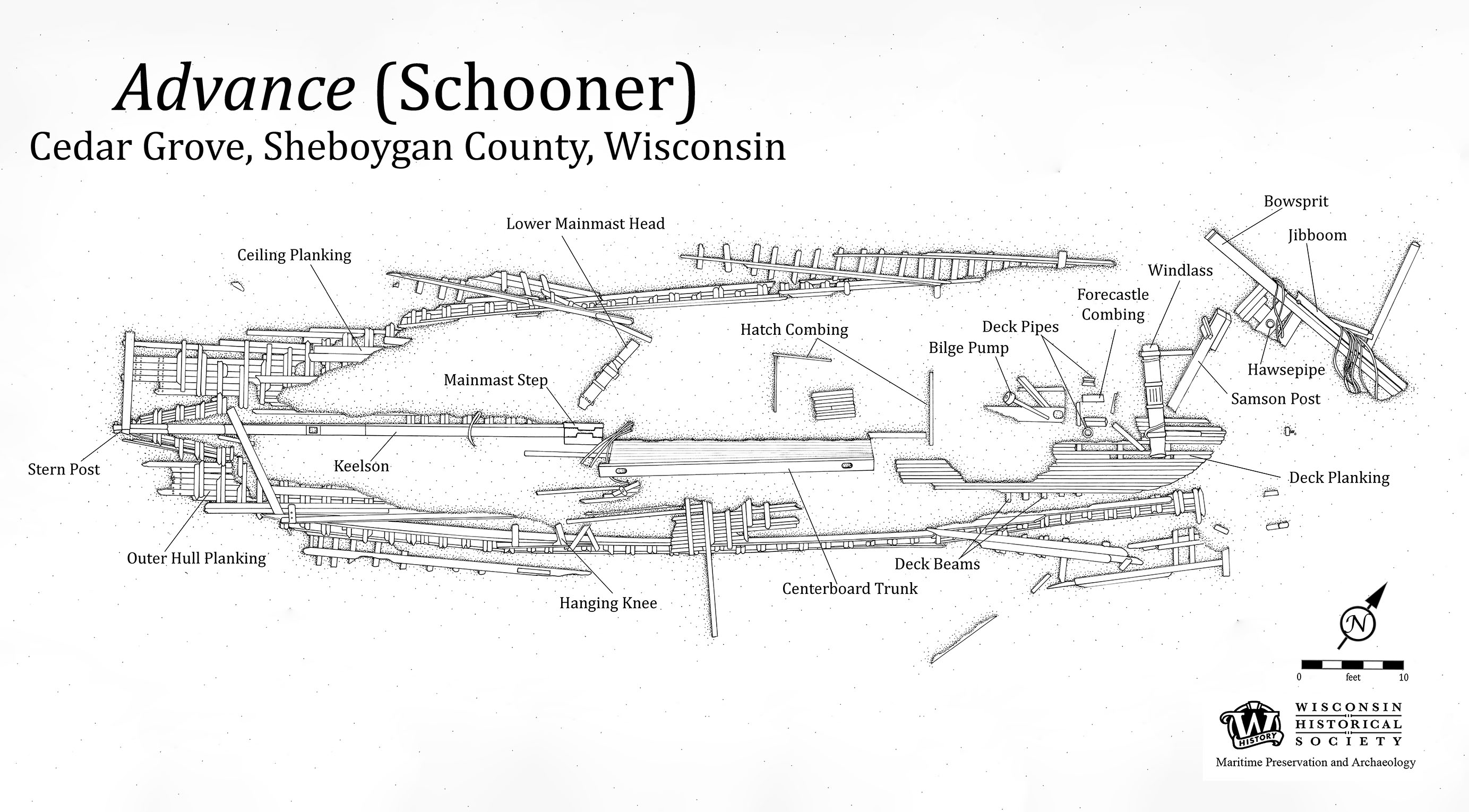
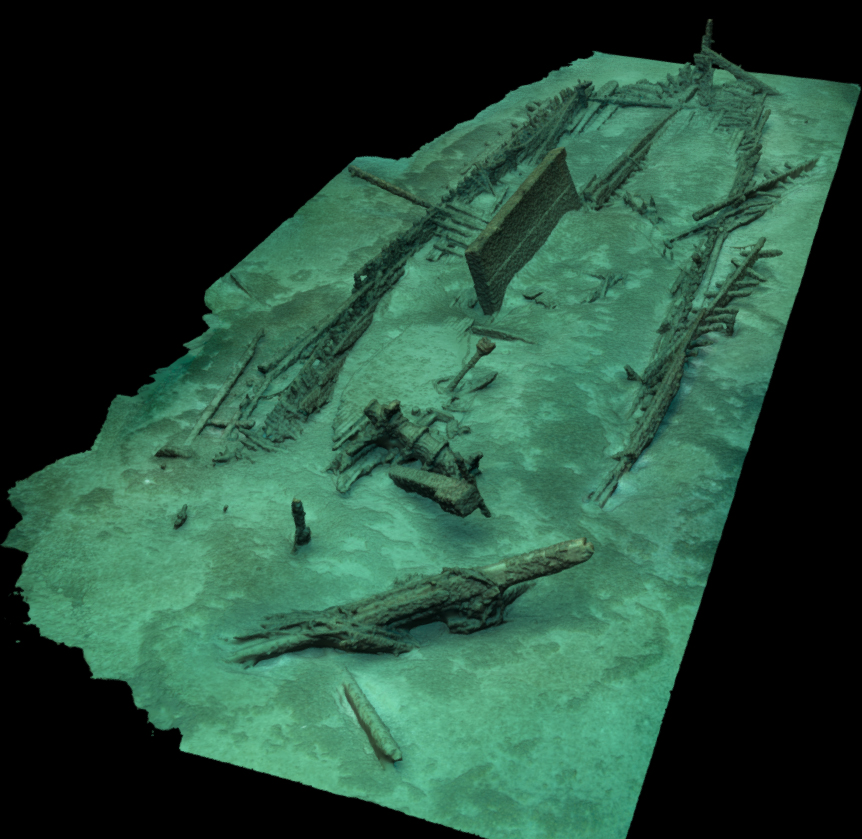
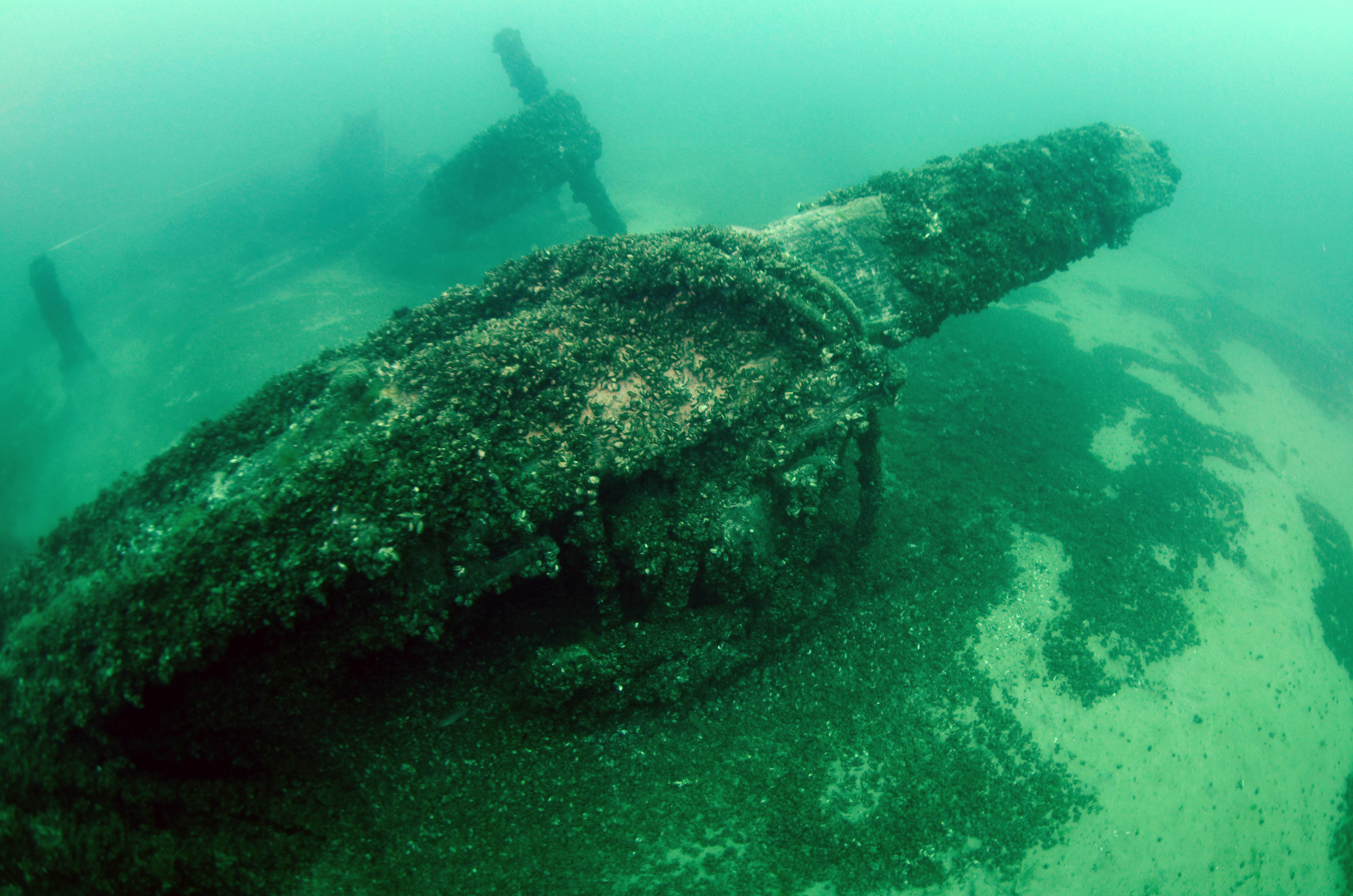
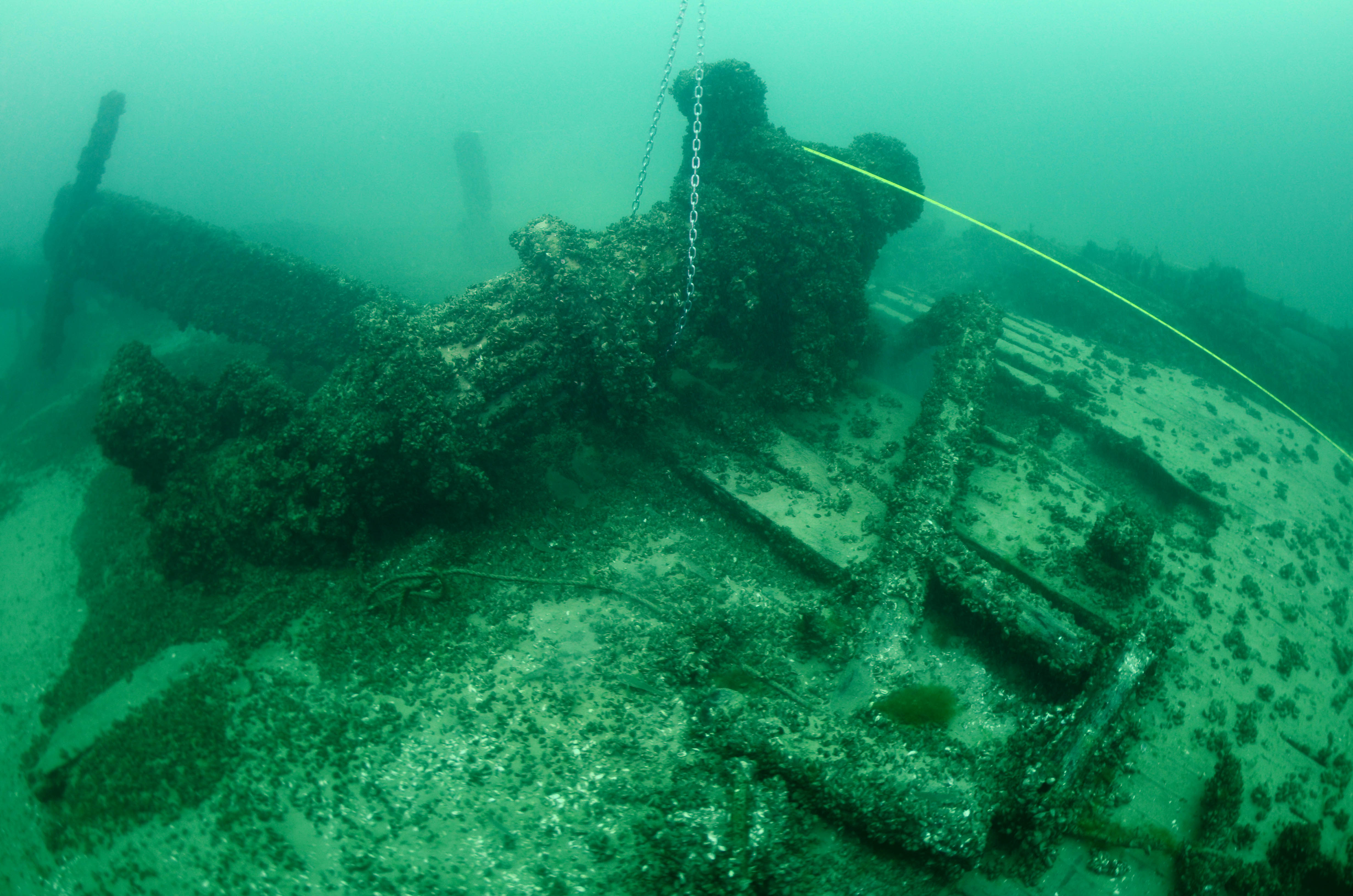
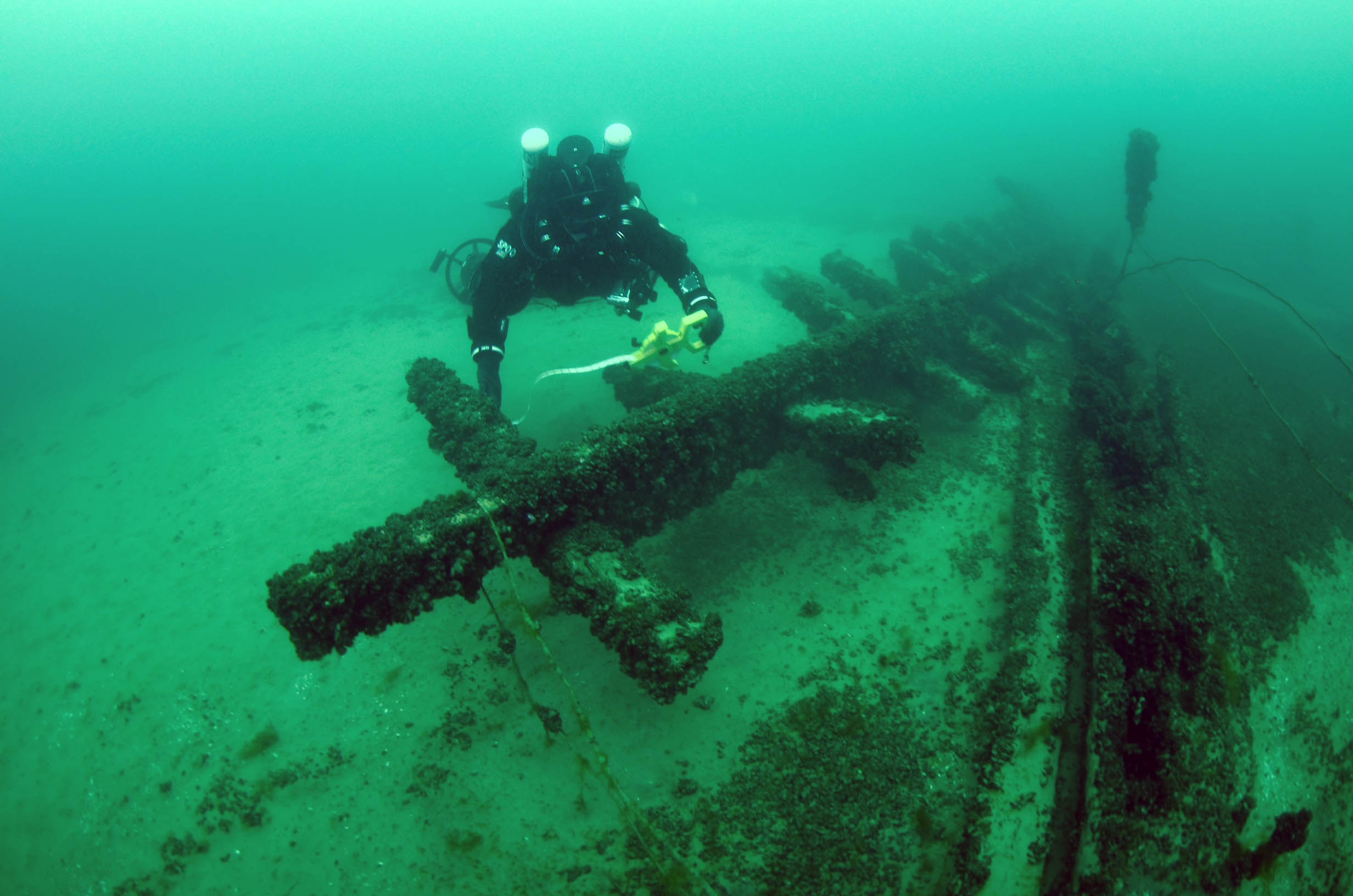
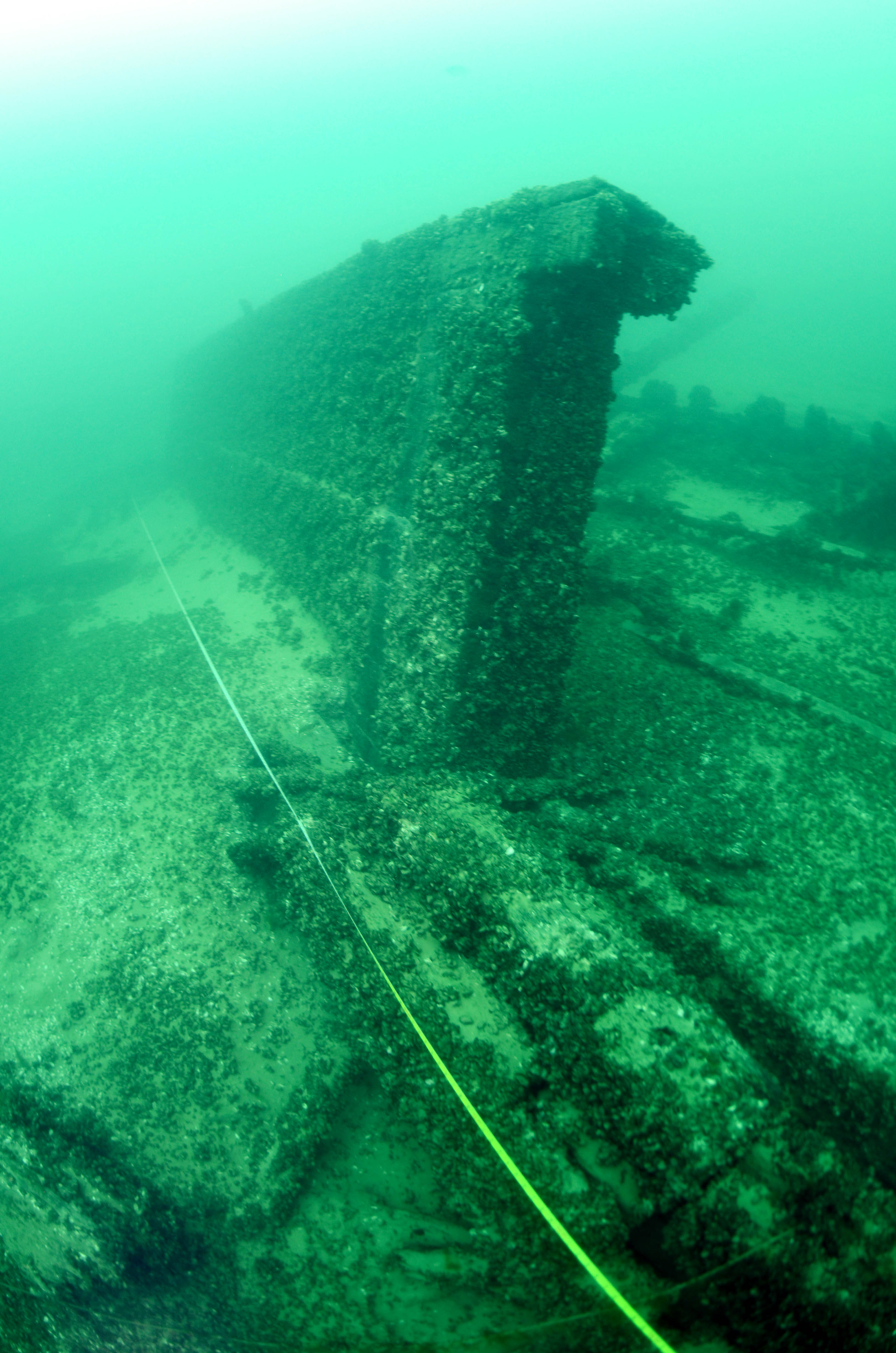
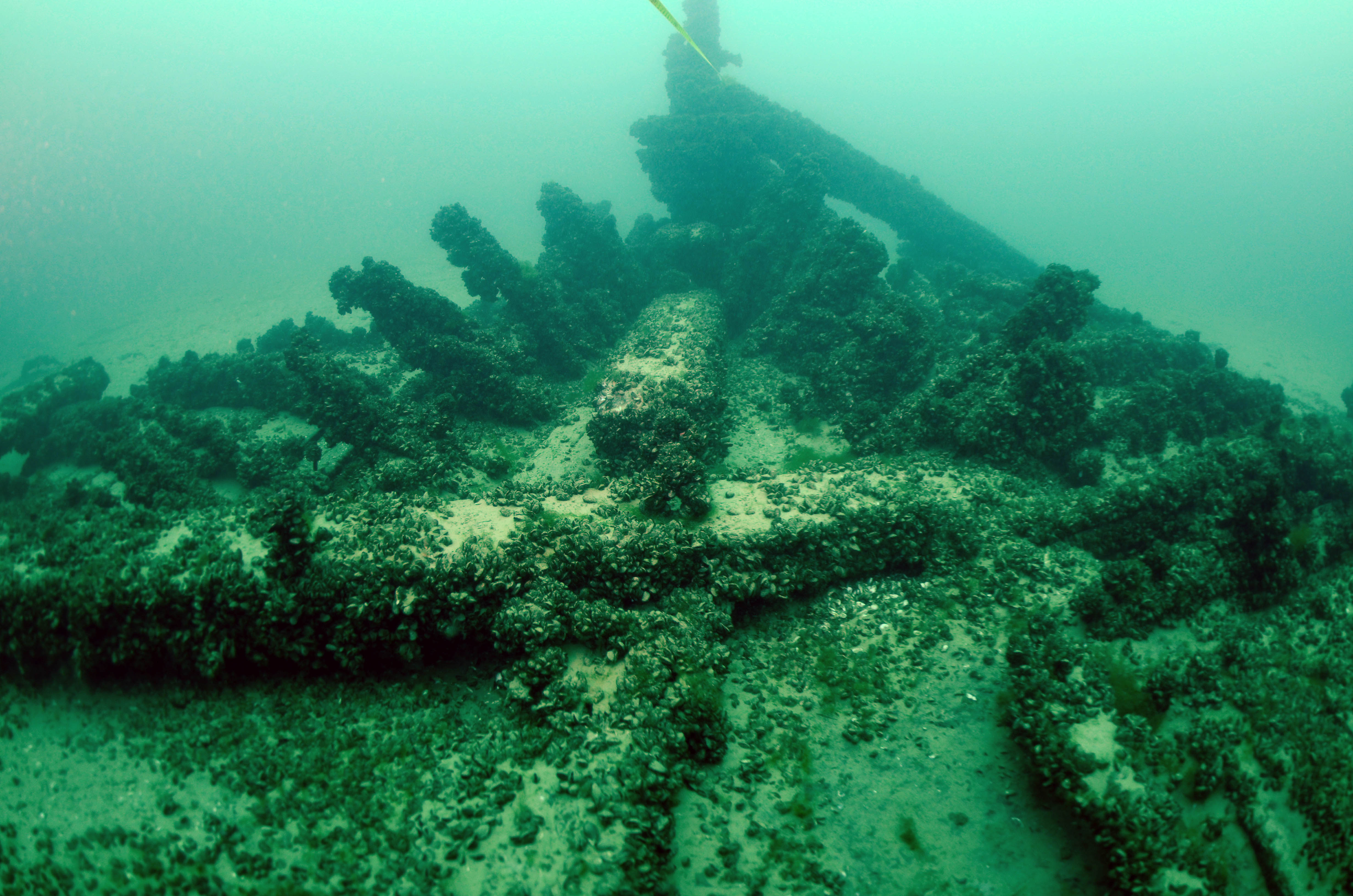
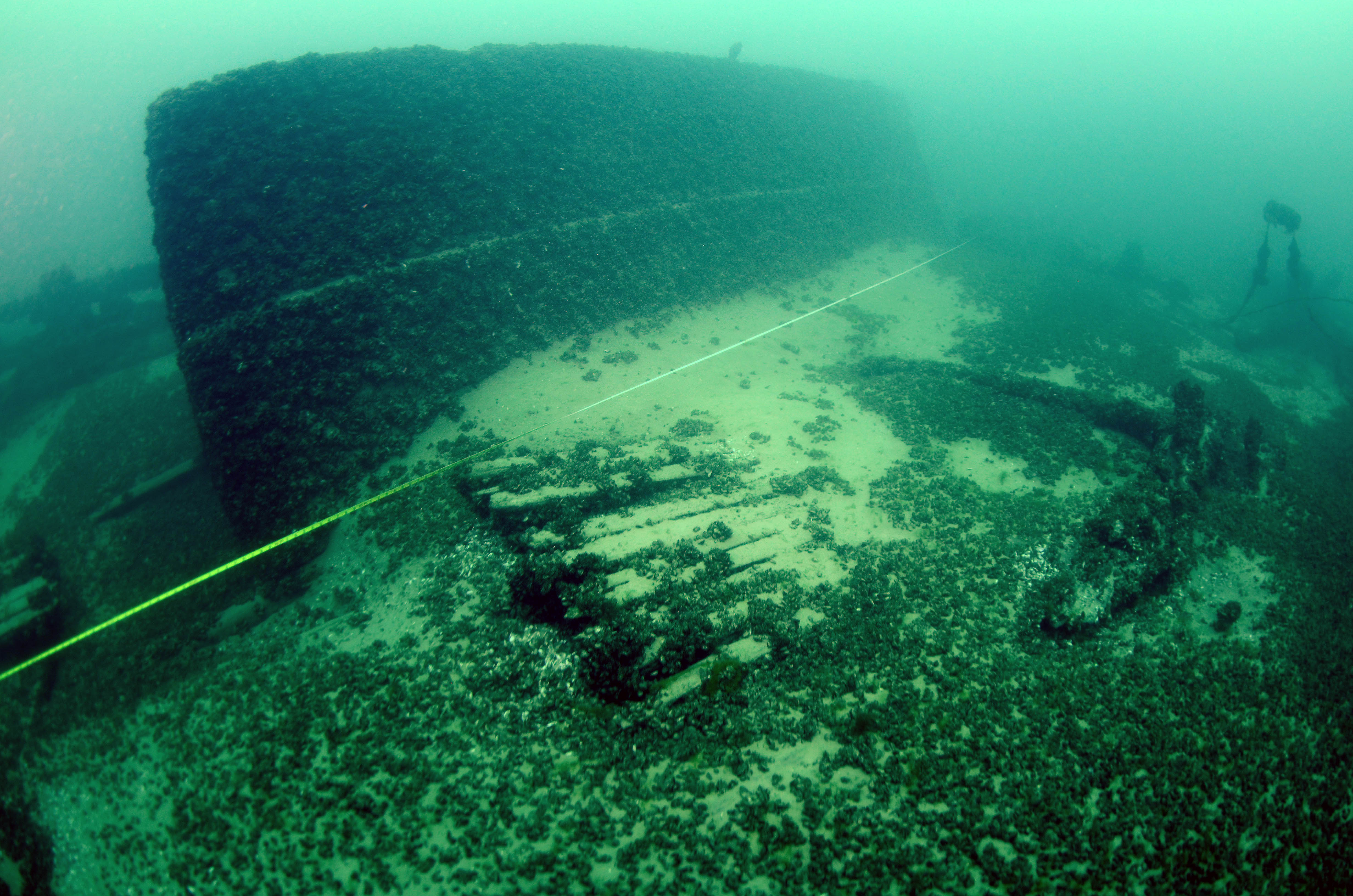
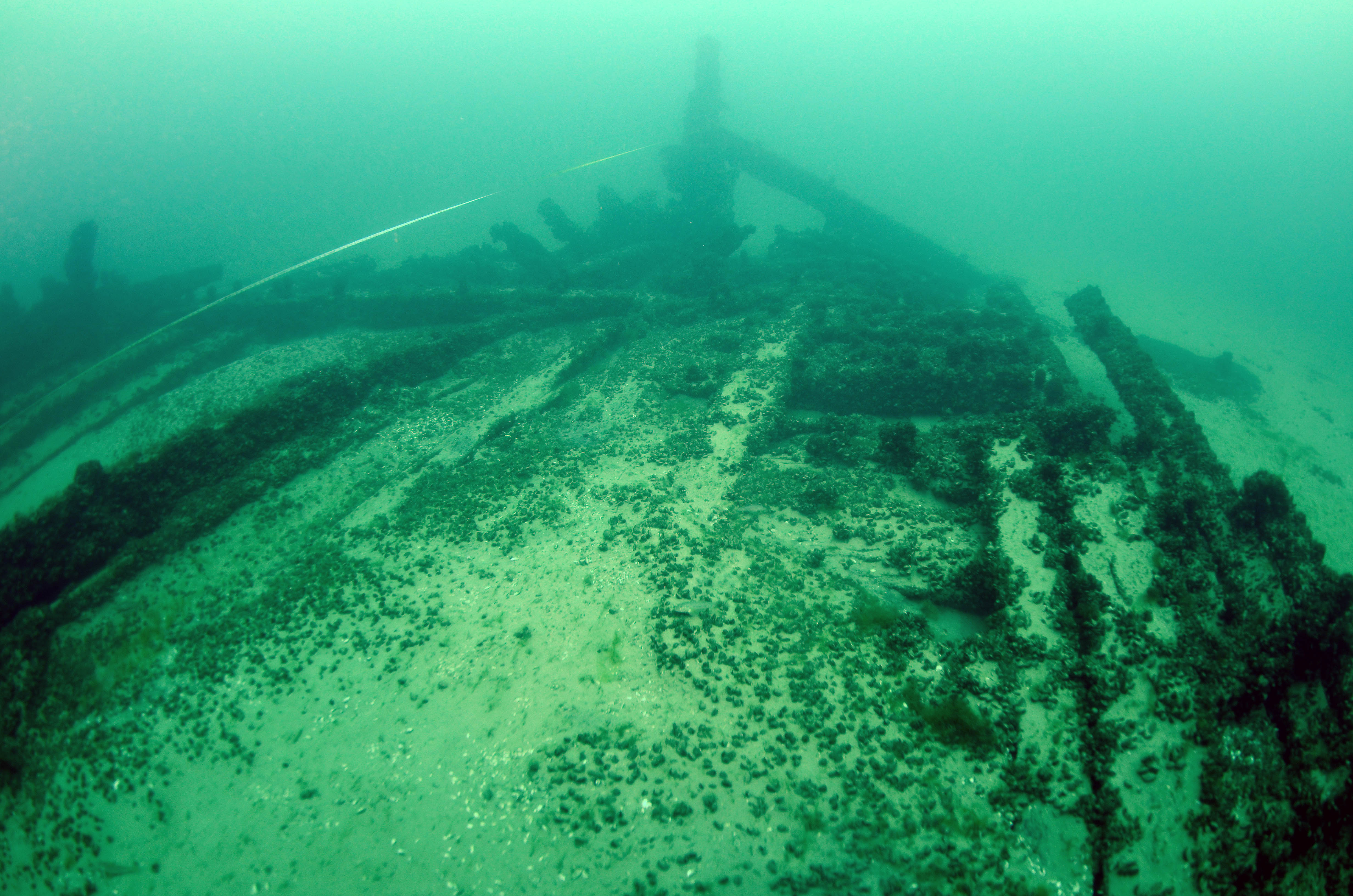
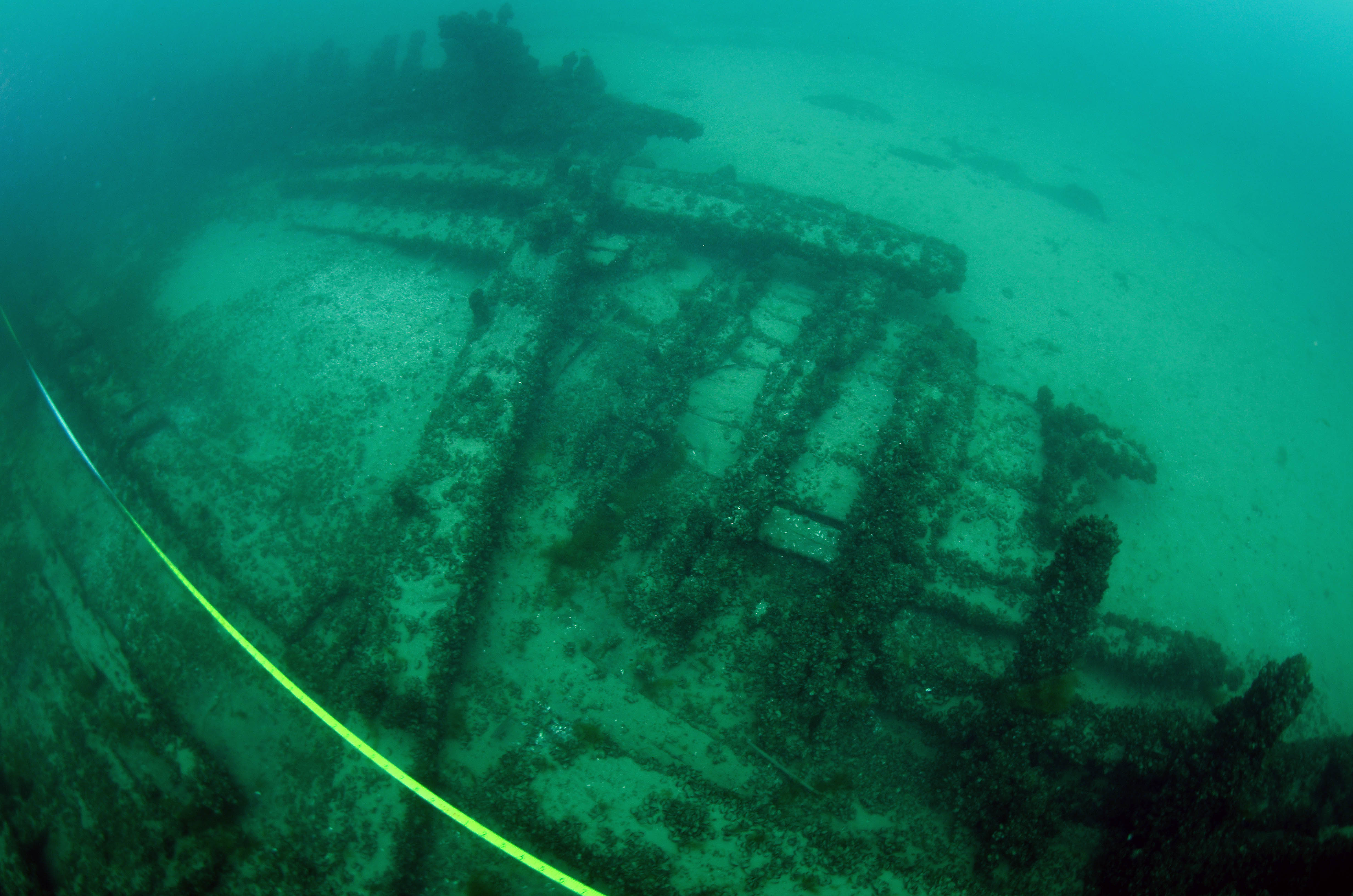

 Confirmed Location
Confirmed Location
 Unconfirmed location
Unconfirmed location